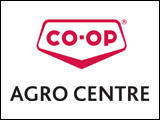A member of the Research and Nutritional Services Team with Zinpro says, the longevity of the sow will determine the overall profitability of the breeding herd.
The selection and development of replacement gilts will influence both longevity and overall lifetime productivity.
Dr. Mark Wilson, a member of the Research and Nutritional Services Team with Zinpro, notes pig’s from first litters will not perform as well as those born in subsequent litters.
What you’ll find is they don’t have the same immunoglobulin components to them as what you’re older parity sows do in the herd. What we find is it creates a long term differential between those pigs from first parity and our pigs from second through fifth parity sows, particularly in the difference of their productivity, mortality issues and even overall weight gain and performance of these pigs. We want to avoid the issue of having to bring in a high number of gilts all the time because it upsets our herd performance from the standpoint of you’re increasing your disease potential.
The second one is that we’d like to get more of those into the older parities and we need to target for what are the things that get us there and picking the highest productive females usually does that. The other one that ties to longevity and to the reproductive performance is that you get gilts fed well in that first lactation so that they have enough nutrients they come back on second litter, have a good litter, they have a shorter weaned estrus interval, that these animals stay really reproductively viable.
We don’t want them to lose very much weight in lactation. We’d like to lose less than at least 10 kilograms body weight from after farrowing until the end of lactation. ~ Dr. Mark Wilson – Zinpro
Dr. Wilson says, when we stay under that number productivity, longevity and profitability all improve.



